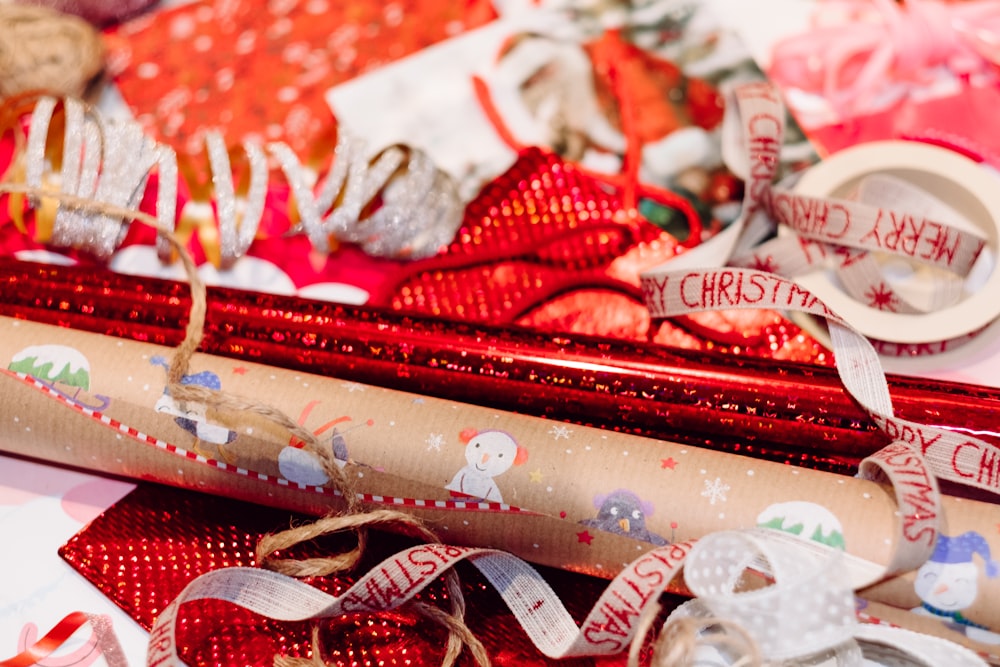Eleanor Antoniou
Christmas might be the most wonderful time of the year, but unfortunately, it is also the most wasteful. There’s no denying that many of us over-consume during the holiday period, whether this means shopping for new party outfits we don’t really need, buying too much food that won’t all be eaten, or spending loads on presents that won’t ever be used.
The pressure of the climate crisis is scary and overwhelming and feels at odds with the hope and magic symbolised by the festive season. Whilst I don’t want to seem Grinch-like or add to the stress brought by the expectation for Christmas to be perfect (something which particularly affects women, who do the majority of Christmas-related tasks – buying and wrapping presents, writing cards, arranging events, cooking, and decorating), there are some simple ways to approach the season with balance and sustainability in mind. The most magical Christmas is not white, but green: one which doesn’t harm the planet in the process of its celebrations.
FASHION
Tis’ the season of sequins, and with Black Friday sales launching the start of the festive period, it’s easy to be drawn in by the glittering party outfits and accessories that pop up across our feeds and in shop windows. Sequins and glitter, however, are microplastics in disguise, meaning that most shiny garments won’t ever biodegrade. During production, the tricky nature of sequined fabrics means that 33% of the material is already wasted through the punching process. Moreover, sequined materials often need to be sewn by hand, adding to the overworking, underpayment and mistreatment of garment workers by fast fashion brands.
“is this something you’ll proudly wear and really love, or is it part of a passing trend that you’ll get bored of after a month?”
Far too many Christmas outfits are bought, worn once, and then thrown away or given to charity. According to Oxfam, British women purchase 33 million sequined garments over the festive season, however, 1.7 million of these are destined to end up languishing in landfill. For the same reasons, I tend to avoid gifting clothing unless I’m sure the receiver will like it – style is so personal and I’d hate for my gifted garment to be thrown away!
This year, reuse what you already own as much as you can. If you are looking for something sparkling, try renting outfits, borrowing from friends or shopping secondhand; and, if you are making a new purchase, consider it carefully before you buy – think is this something you’ll proudly wear and really love, or is it part of a passing trend that you’ll get bored of after a month?
GIFTS
Almost one in five unwanted presents (19%) end up in landfill – that’s around 22,720,975 gifts a year, according to research done by the UK Gift Card and Voucher Association. That all adds up to a lot of presents that go unused and unloved.
“sometimes less is more”
It can sometimes feel like we’re only buying or receiving presents for the sake of it, and the statistics suggest the same: over 32 million (62%) of Brits receive at least one unwanted gift each Christmas, whilst 1 in 10 of us have even bought someone a gift we knew they wouldn’t like.

It’s time to shift our viewpoints a little – sometimes less is more, and I know I’d certainly prefer just one present that I actually want than a hundred that I’m just going to dispose of. Shop for more meaningful gifts, and remember that they don’t always have to be physical items. Gifting an experience can be just as wholesome, and if you’re really stuck, gift cards are always an option, whether for a favourite shop, or for that cute little dessert place you’ve always been meaning to try together. For environment or animal lovers, then gifting an adoption pack from a charity like the WWF is a great idea that also helps the planet.
Finally, shop secondhand and support small businesses whenever you can. Etsy is perfect for finding unique presents, whilst hundreds of items in perfect condition are sitting in charity shops or on secondhand shopping sites, just waiting for someone to buy them. Fight the stigma against secondhand shopping and make a day of browsing charity shops in search of treasures.
“Be resourceful and add sparkles with pretty ribbons and bows that can be used for years to come”
It’s also worth thinking about how we wrap our gifts. Reusable or recyclable wrapping paper is always more sustainable, and whilst I love glittery, glossy papers, sadly they cannot usually be recycled. Be resourceful and add sparkles with pretty ribbons and bows that can be used for years to come, or with reusable gift bags. I’ve even seen some people get really creative, using tote bags to wrap presents, which then become a part of the gift itself!
FOOD AND DECORATIONS
Food waste also accelerates over Christmas, as we all over-stock our cupboards in preparation for Christmas and New Year dinners with friends and family. So much is bought, but not eaten: in the UK, we waste 5 million Christmas puddings, 2 million turkeys, and 74 million mince pies each year. To consume more mindfully, try not to over-buy, avoid leftovers, and compost the awkward scraps that you really can’t eat. Eating more plants at your Christmas dinner is also better and kinder for the planet.

For Christmas parties, opt for reusable plates, glasses, and cutlery whenever possible, rather than buying single-use options. Christmas crackers also generate needless waste, especially with plastic toys that we’ll throw away the next day: reusable DIY crackers are a good swap, which can be filled with more personal mini-gifts or chocolates. Also remember to re-use your decorations, and, if you are buying a plastic Christmas tree, consider whether you will use it for at least ten years – if not, it is better to buy a real FSC-certified tree, according to the WWF. Other sustainable tree options include renting a tree or purchasing a potted tree that can be brought inside each year and become part of your memories.
Featured image courtesy of Annie Spratt on Unsplash. Image license can be found here. No changes were made to this image.

